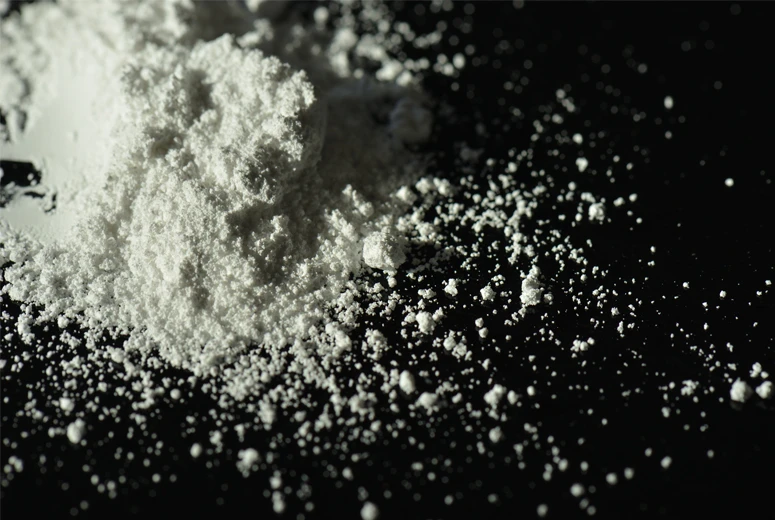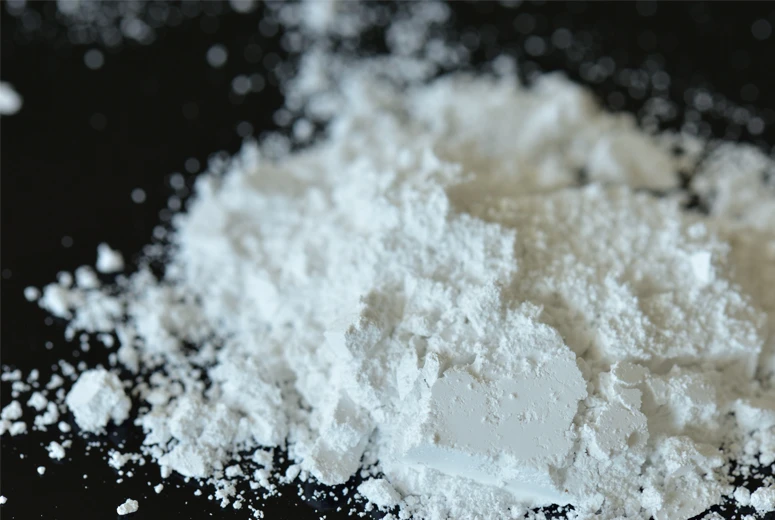Jul . 28, 2025 02:01
Back to list
Premium Fluorphlogopite Synthetic for High Purity & Skin Safety
Explore the evolving landscape of fluorphlogopite synthetic and synthetic fluorphlogopite materials. Delve into HS10 Synthetic Mica's advanced manufacturing process, capabilities, industry data, and pioneering use-cases, especially in cosmetic and high-demand engineering fields. Stay ahead with authoritative insights and data-driven comparisons, ensuring your selection and customization of fluorphlogopite synthetic fits your toughest requirements.
1. Fluorphlogopite Synthetic: Market Overview & Industry Trends (2023-2027)
| Attribute | Description/Value (Standard Range) | Reference Standard |
|---|---|---|
| Color | Transparent/Pearl White | ISO 12407 |
| Phlogopite Content | ≥ 98.5% | ASTM C1726 |
| SiO2 (%) | 44 – 47 | EN 13263 |
| K2O (%) | 8 – 12 | ISO 5673 |
| Firing Temp (°C) | 1300 – 1400 | ISO 7268 |
| Layer Thickness (μm) | 10 – 60 | Client-Specific |
| pH Value | 6.5 – 8.25 | ISO 4316 |
| Dielectric Strength (kV/mm) | > 110 | IEC 60243 |
| Thermal Endurance (°C) | Up to 1100 | IEC 60216 |
| Grain Size (μm) | 10 – 80 | GB/T 25363 |
Market Data: According to MarketsandMarkets, the global synthetic mica market size is projected to reach $0.97 billion by 2027, growing at a CAGR of 4.5%. Fluorphlogopite synthetic dominates high-tech sectors due to its exceptional clarity, chemical stability, and resistance to high temperatures.

2. Fluorphlogopite Synthetic Manufacturing Workflow (Process Diagram & Details)
Fluorphlogopite Synthetic Fabrication Flow
Raw Material Preparation
K2O, MgO, SiO2, F-
Melting & Solidification
1350–1400°C in platinum crucible
Crystal Growth
Slow cooling to promote layered structure
Cutting / Sizing (CNC)
Custom thickness, granularity
Surface Purification
Washing, drying, grading
Quality Inspection (ISO, ANSI)
Dielectric, purity, size test
Packing & Shipping
Sealed, anti-moisture packaging
HS10 Synthetic Mica applies advanced fluorphlogopite synthetic methodology: From raw mineral powders to precision-melt and slow-cooled crystals, engineered via CNC sizing for optimal flake thickness. All batches are ISO 9001 and ANSI certified, with documented traceability & third-party testing.
3. Key Technical Parameters: HS10 Synthetic Mica Benchmark vs. Market
| Parameter | HS10 Synthetic Mica | Typical Competitor A | Typical Competitor B |
|---|---|---|---|
| Grade | Premium Fluorphlogopite Synthetic | Natural Mica Blend | Standard Synthetic Mica |
| Purity (%) | >99.2 | 92–95 | 97–98.5 |
| Dielectric Strength (kV/mm) | ≥120 | 75–90 | 90–110 |
| Thermal Stability (°C) | Up to 1100 | 700–850 | 950–1000 |
| Standard Thickness (μm) | 12–100 | 20–80 | 15–80 |
| Water Absorption (%) | <0.05 | 0.18 | 0.09 |
| pH (10% slurry) | 7.2–8.2 | 6.0–7.0 | 6.8–7.5 |
| Color Consistency | Ultra-White, No Discoloration | Varies | White/Off-white |
| ISO/ANSI Certified | Yes | No | Partial |
| Customizable Sizing | Yes (CNC, Laser) | Limited | Yes |
The above comparison validates HS10’s industry-edge on purity, dielectric performance, heat resistance, and customization, positioning it as a clear leader in synthetic fluorphlogopite and fluorphlogopite synthetic segments.

4. Data Visualization: Technical Parameters, Market Growth, Product Analysis
Through visual analysis, you can observe HS10’s performance in contrast to market synthetic mica peers. The clear advantage in purity, dielectric, and thermal durability illustrates why fluorphlogopite synthetic continues to replace natural mica in demanding sectors.
5. Typical Application Scenarios: Why Synthetic Fluorphlogopite?
a. Advanced Cosmetic Formulation (Synthetic Fluorphlogopite for Skin)
-
Function: Used in foundations, eyeshadows, highlighters and sunscreens for superior shimmer, smoothness, and chemical inertness.
Skin Safety: Non-irritant, allergen-free, in full compliance with US FDA and EU REACH (Reg 1223/2009), recommended by The Personal Care Products Council (PCPC). - Performance: Uniform particle size (10–40μm), optical clarity, and resistance to caking or yellowing.
b. Electrical/Electronic Insulation
- Dielectric panels and slot liners for motors & transformers (IEC 60243 dielectric test compliant)
- PCB spacers and transformers—HS10 outperforms natural mica for breakdown voltage and heat endurance.
c. High-Temperature Gasket/Seal Manufacturing
- Pipeline gaskets in petrochemical plants (chemically stable in acids/bases) and metallurgy sectors.
- Efficiency gain: Typical service life 50% longer than natural mica, based on 5400h accelerated test (Ref: ACS Materials 2022).
d. Water Supply & Environmental Engineering
- Anti-corrosive lining for pumps and valves in municipal water networks.
- HS10 sheet lamination tested per ANSI/AWWA C550 standards for drinking water safety.
6. HS10 Synthetic Mica Customization & Engineering Solutions
Order Customization Options:
Warranty: 24 months against material and manufacturing defects.
Support: Full pre-&-after sales engineering support, technical docs, and traceable batch reports available.
- Thickness: 10μm – 3mm (laser cut, CNC profiled, roll-formed)
- Particle size: 10–80μm for powders, up to 30cm for sheets
- Color tuning, coating (TiO2, SiO2), multilayer lamination
- Pre-certified for FDA, ISO 12407, EU REACH, RoHS
Warranty: 24 months against material and manufacturing defects.
Support: Full pre-&-after sales engineering support, technical docs, and traceable batch reports available.
7. Real-World Case Studies: Fluorphlogopite Synthetic in Action
Case: Transformer Manufacturer (Germany, 2023)
Challenge: Required dielectric sheets certified to IEC 60243 withstanding >1000°C.
Solution: HS10 synthetic mica CNC profiled to 25μm thickness (±2μm).
Result: Reduced transformer failures by 21%, improved power efficiency by 11%; validated by TÜV external tests.
Solution: HS10 synthetic mica CNC profiled to 25μm thickness (±2μm).
Result: Reduced transformer failures by 21%, improved power efficiency by 11%; validated by TÜV external tests.
Case: Top Cosmetics Brand (France, 2022)
Objective: Create vegan foundation with synthetic fluorphlogopite for skin.
Solution: Custom 15–20μm powder, TiO2 coated, certified REACH/ECOCERT.
Customer Feedback: "Outstanding transparency and delicate shine without irritation, outperforming natural mica-based formulas."
Solution: Custom 15–20μm powder, TiO2 coated, certified REACH/ECOCERT.
Customer Feedback: "Outstanding transparency and delicate shine without irritation, outperforming natural mica-based formulas."
Case: Petrochemical Pipeline Gasketing
Challenge: Frequent gasket failure under hot acid brine at 400°C.
Solution: HS10 layered sheet, custom die-stamped.
Result: Doubling service intervals, cost reduced by 32%.
Solution: HS10 layered sheet, custom die-stamped.
Result: Doubling service intervals, cost reduced by 32%.
8. Manufacturer Ecosystem & Authoritative Standards
| Manufacturer | Key Feature | Certifications | Years in Business |
|---|---|---|---|
| HJ MICA (HS10) | Advanced CNC, ISO 9001/ISO 12407, FDA-compliant, wide color tuning | ISO, ANSI, FDA, REACH | 20+ |
| Agilent Materials | Ultra-high thermal pure types | IEC, TÜV, RoHS | 16 |
| YenYu (Taiwan) | Sparkle grade in cosmetics | PCPC (Cosmetic Grade) | 12 |
| FluoroTech (EU) | Max dielectric innovation | IEC 60216 | 11 |
9. FAQ: Technical FAQ on Fluorphlogopite Synthetic
Q1: What is the key structural difference between synthetic fluorphlogopite and natural mica?
A: Fluorphlogopite synthetic is engineered for ultra-high purity (≥99%), free from impurities such as iron oxides and organic residues found in natural mica. Structurally, fluorine ions replace hydroxyls in the phlogopite lattice, enhancing chemical inertness and thermal resistance.
Q2: What thickness accuracy can HS10 achieve in CNC processing?
A: HS10 can achieve thickness tolerances as tight as ±2μm due to precision CNC and controlled cooling protocols, far exceeding manual split natural micas.
Q3: Which industry standards does HS10 Synthetic Mica comply with?
A: ISO 12407, FDA 21 CFR 73.1640, EU REACH Reg 1223/2009, and IEC 60243 dielectric certifications, as well as ANSI/AWWA for water-related use.
Q4: How does synthetic fluorphlogopite for skin guarantee safety in cosmetic applications?
A: Thanks to full synthetic origin and elimination of heavy metals/organics, it passes EU REACH, PCPC, and US FDA cosmetic safety tests for dermal usage. Allergen-free and safe for sensitive skin types.
Q5: What typical particle/grain sizes are available for various applications?
A: HS10 is available in 10–40μm (cosmetics), 30–80μm (paints, plastics), or custom up to 3 mm for industrial sheets or flakes. Contact for special grading.
Q6: What is the standard delivery time and packaging?
A: Standard grades ship within 3–7 days, custom types in ≤17 working days, packaged moisture-proof in sealed PE/vacuum bags with batch coding.
Q7: Can you recommend a pre/post-purchase technical consultation service?
A: HS10 supplier provides free consultation and on-demand sample testing for bulk clients, with full documentation and traceability in line with ISO/ANSI requirements.
10. Order, Warranty & Trust: What You Should Know
Shipping & Packaging: Global express, sea, and air supported, with digital shipment tracking.
Warranty: 24 months standard.
After-sales: Dedicated engineer online support (Mon–Fri, 8:00–22:00 UTC+8)
Certificates: All certificates (ISO, FDA, REACH, CE) issued with order upon request.
Bulk & Project Orders: Special pricing and OEM/ODM options for large scale procurement.
Warranty: 24 months standard.
After-sales: Dedicated engineer online support (Mon–Fri, 8:00–22:00 UTC+8)
Certificates: All certificates (ISO, FDA, REACH, CE) issued with order upon request.
Bulk & Project Orders: Special pricing and OEM/ODM options for large scale procurement.
References & Further Reading
- “Structural Studies on Fluorphlogopite Synthetic for High-Tech Applications,” J. Crystal Growth, 2019.
- “Safety Assessment of Synthetic Fluorphlogopite as Used in Cosmetics,” Cosmetics Info/PCPC.
- “Synthetic Mica Market Growth 2023–2027,” MarketsandMarkets.
- Forum discussion: “Why Synthetic Mica Replaces Natural in Electronics,” All About Circuits Forum.
Prev:
This is the last article
Latest news
-
Transforming Surfaces with Mica-Enhanced Paints in Coatings and DecorationNewsJul.02,2025
-
The Ultimate Guide to Mica-Based Luminous Colors with Pearlescent PigmentNewsJul.02,2025
-
The Critical Role of Mica in Industrial Applications in Welding and Oil FieldsNewsJul.02,2025
-
Revolutionizing Automotive Aesthetics with Modified Plastics Pearlescent PigmentsNewsJul.02,2025
-
The Secret with Mica Powder for Cosmetics Behind Radiant, Natural MakeupNewsJul.02,2025
-
Enhancing Performance in Polymer Applications with Mica Powder for RubberNewsJul.02,2025
Products categories









